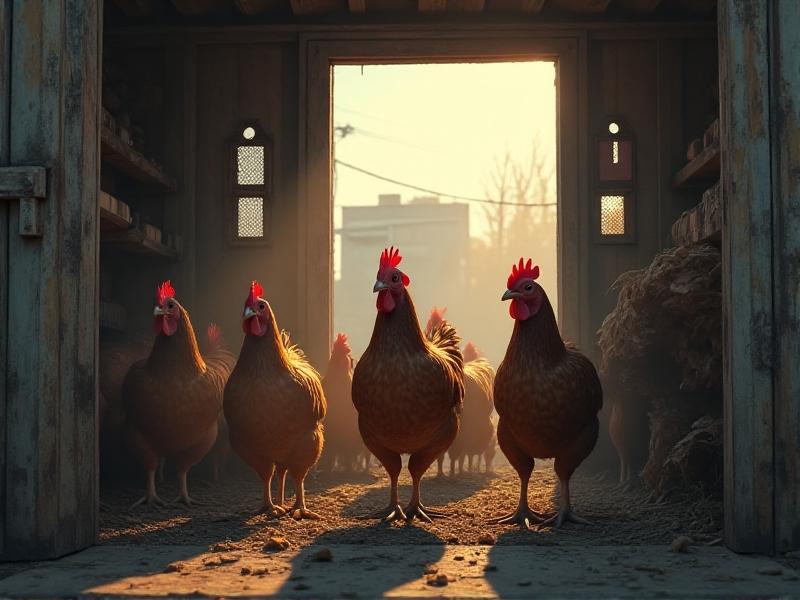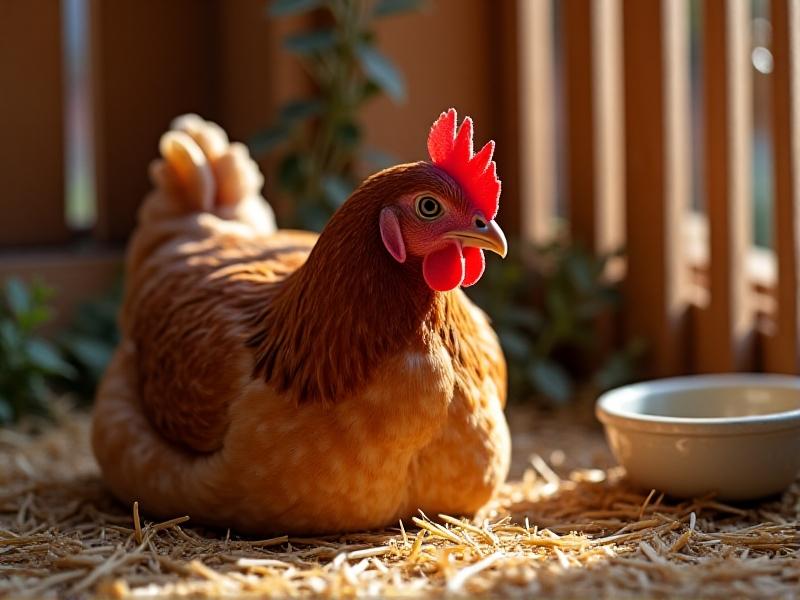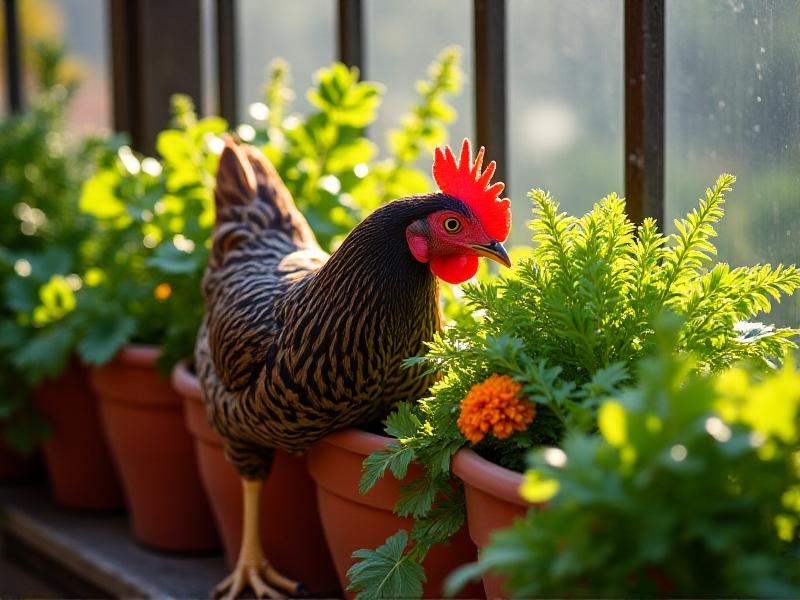Organic Pest Control: Keeping Urban Coops Parasite-Free
Urban Chicken Coops: Why Organic Pest Control Matters
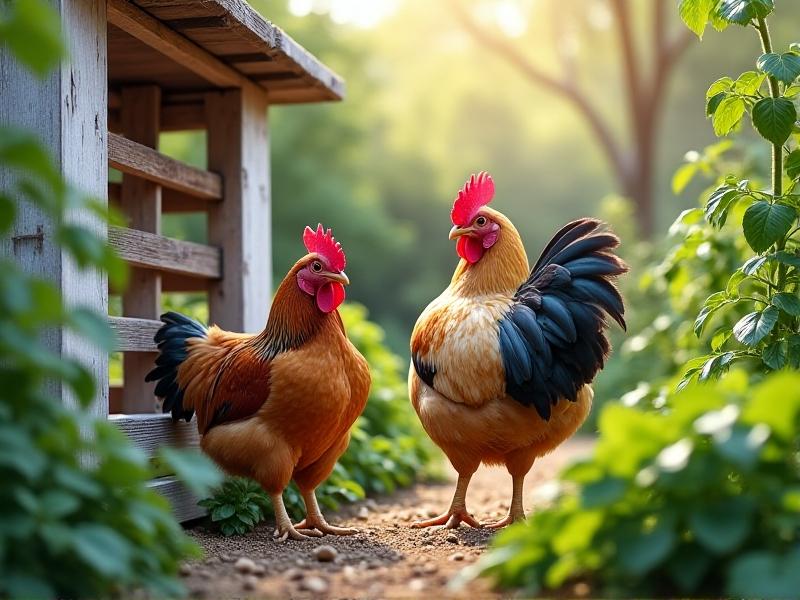
Urban chicken coops have become a staple of sustainable living, offering fresh eggs and a connection to nature. However, densely populated environments create unique challenges for coop hygiene. Traditional pesticides pose risks to chickens, humans, and local ecosystems, making organic pest control essential. By prioritizing natural methods, urban poultry keepers protect their flocks without compromising safety or contributing to chemical runoff.
Organic approaches also align with the ethos of urban farming: fostering self-sufficiency while respecting ecological balance. Pests like mites, lice, and rodents thrive in cities, drawn to food waste and confined spaces. Left unchecked, infestations can spread disease, reduce egg production, and stress birds. Proactive, chemical-free strategies ensure coops remain resilient against these threats while supporting biodiversity.
Common Pests in Urban Coops: Identification and Risks
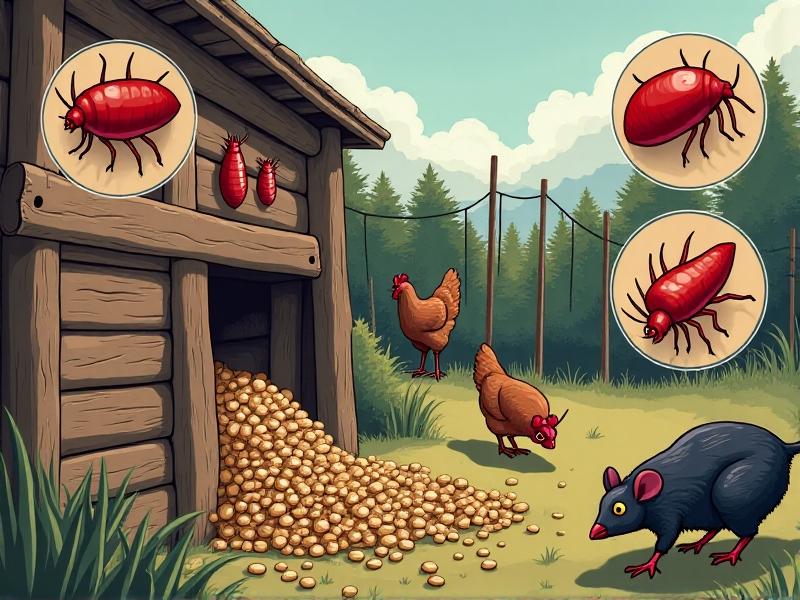
Understanding the enemy is half the battle. Red poultry mites hide in crevices during daylight, emerging at night to feed on blood, causing anemia in hens. Northern fowl mites remain on birds, clustering around vent feathers. Lice chew skin and feathers, while flies breed in moist bedding. Rodents like mice and rats steal feed and introduce pathogens such as salmonella.
Each pest requires tailored responses. For example, mites demand thorough coop crevice cleaning, while fly control hinges on drying damp areas. Early identification prevents minor issues from escalating. Regularly inspecting birds for feather loss, lethargy, or scabs helps catch infestations before they jeopardize flock health.
Prevention First: Designing a Pest-Resistant Coop

Smart coop design reduces vulnerability. Elevating structures prevents rodents from burrowing inside. Using hardware cloth (not chicken wire) with ¼-inch gaps blocks mites and mice. Sealing gaps with food-grade silicone denies pests hiding spots. Sloped roofing and gutters divert rainwater, eliminating puddles that attract flies.
Strategic landscaping adds another layer of defense. Planting mint, lavender, or marigolds around coops repels insects naturally. Storing feed in airtight containers and using treadle feeders minimizes spillage that lures rats. A well-planned space isn’t just a shelter—it’s a fortress built on foresight.
Natural Repellents: Plants, Oils, and Diatomaceous Earth

Nature provides potent pest deterrents. Diatomaceous earth (DE), a fossilized algae powder, dehydrates insects without harming chickens when used properly. Apply food-grade DE to dust baths and coop floors, avoiding birds’ eyes and lungs. Essential oils like thyme or citrus diluted in water make effective spray cleaners for perches.
Botanical allies include garlic, which can be added to feed to deter mites, and neem oil, a natural insect growth regulator. Fresh herbs hung in nesting boxes double as aromatic pest barriers. These solutions work synergistically, creating a hostile environment for invaders while enriching the coop’s microecology.
Biological Controls: Harnessing Predators and Microbes
Introducing beneficial organisms offers long-term pest management. Predatory mites like Hypoaspis miles devour poultry mites without bothering chickens. Nematodes applied to soil combat fly larvae, while birds such as guinea fowl consume ticks and beetles. Even microbes play a role—probiotic coop sprays boost hens’ gut health and manure decomposition, reducing fly-breeding sites.
These living solutions require balance. Overstocking guineas can stress chickens, and nematodes need moisture to thrive. Yet when integrated thoughtfully, biological controls sustain a self-regulating system that minimizes human intervention.
Monitoring and Early Detection: Routine Checks That Save Flocks
Weekly inspections are critical. Examine birds at night with a flashlight to spot mites on perches. Check vent feathers for lice eggs and skin for scaly leg mites. Use sticky traps to monitor fly populations. Keeping a log helps track trends—for example, a sudden spike in flies might indicate a hidden manure pile.
Early signs often seem minor: a drop in egg yield, slight feather disarray, or increased scratching. Addressing these promptly with organic treatments prevents costly, large-scale infestations. Vigilance is the keeper’s best tool.
Safe Cleaning Practices: Non-Toxic Solutions for Coop Hygiene
Regular cleaning disrupts pest lifecycles. Replace bedding weekly, using sand or straw instead of moisture-retaining pine shavings. Scrub surfaces with vinegar or citric acid solutions, which disinfect without leaving toxic residues. Sun-drying cleaned equipment kills pathogens naturally.
Deep-clean coops seasonally. Remove all bedding, then spray walls with a 3% hydrogen peroxide solution. Let surfaces dry completely before adding fresh litter. This routine eradicates lingering mites and bacteria while maintaining a hen-friendly habitat.
Seasonal Challenges: Adapting Strategies Through the Year
Pest pressures shift with weather. Summer’s heat accelerates fly breeding, demanding frequent manure removal. Autumn invites rodents seeking warmth, so reinforce coop insulation and seal entry points. In winter, mites may hibernate in wood, requiring targeted DE applications. Spring rains necessitate drainage checks to prevent mosquito habitats.
Adaptability is key. Rotate deterrents—e.g., deploy nematodes in damp seasons, increase herbal repellents during dry spells—and adjust cleaning frequency as temperatures fluctuate. A dynamic approach respects nature’s rhythms while safeguarding flocks year-round.
Community Efforts: Collective Action Against Urban Infestations
Pests don’t respect property lines. Neighborhood initiatives—like bulk purchases of organic supplies or coordinated composting—reduce citywide infestations. Sharing knowledge through local workshops builds communal resilience. Report rodent sightings to municipal agencies promptly, as delayed responses risk area-wide outbreaks.
Collective vigilance also deters improper pesticide use. When communities champion organic methods, they protect local watersheds and wildlife, proving that urban farming’s future lies in collaboration, not chemicals.
Sustaining Health: The Long-Term Benefits of Organic Practices
Organic pest control isn’t just reactive—it cultivates enduring flock vitality. Hens raised without synthetic chemicals develop robust immune systems and higher stress tolerance. Over time, coops become ecosystems where beneficial microbes and insects outcompete pests naturally.
This philosophy extends beyond coops. By rejecting toxins, urban keepers model stewardship for future generations, proving that even in cities, humans can nurture nature without dominating it. Healthy chickens, after all, are merely the start; the true reward is a thriving, balanced urban ecosystem.
